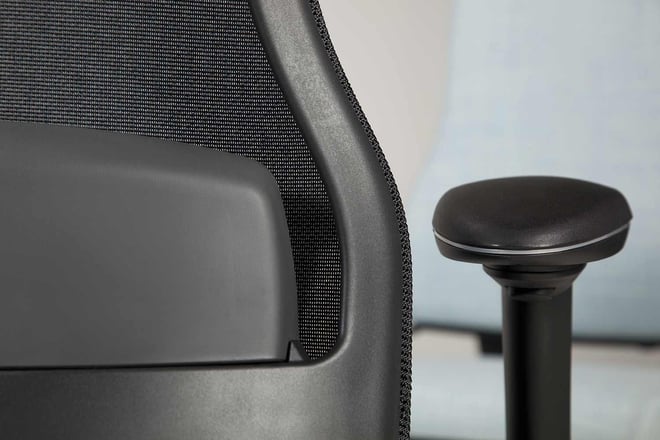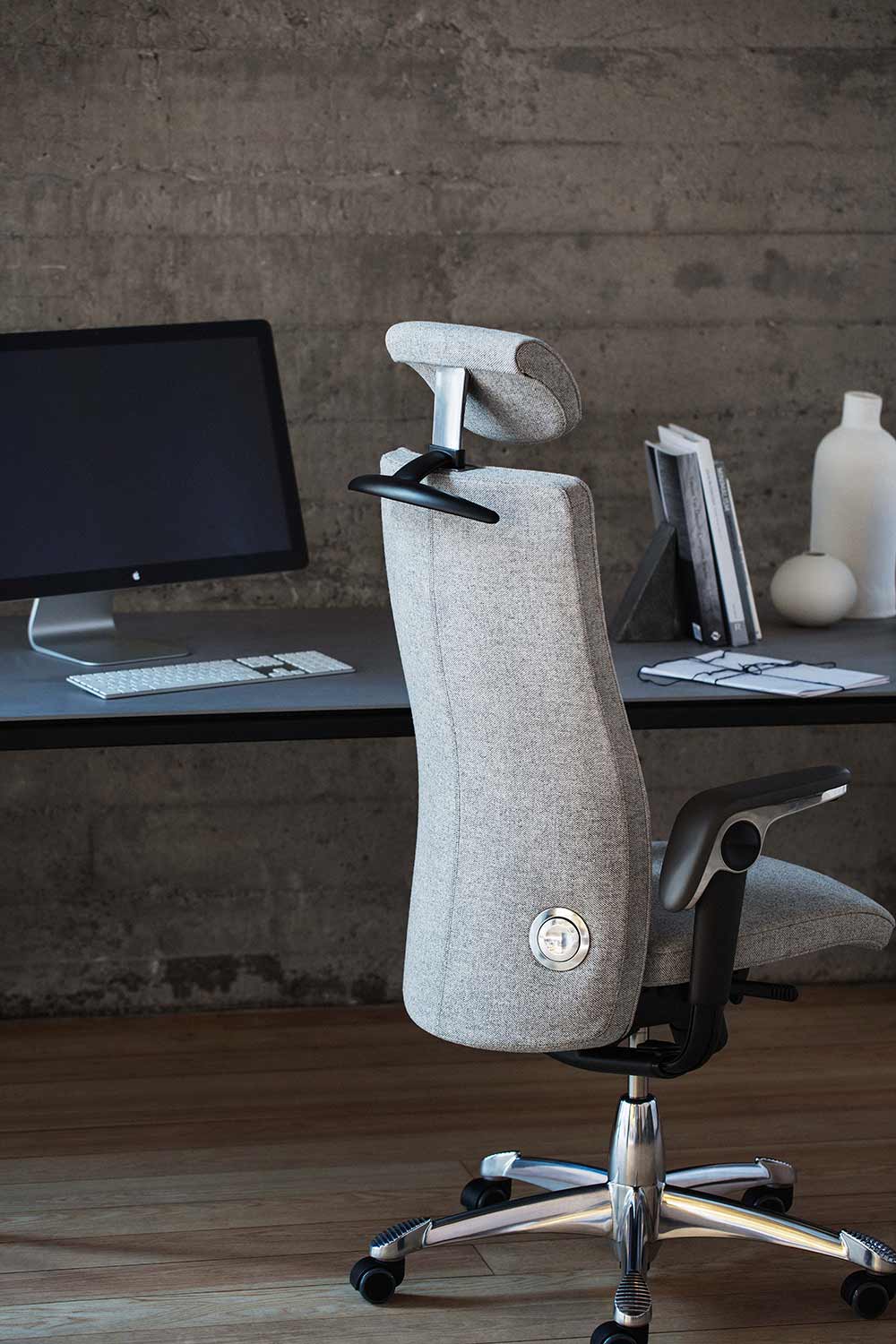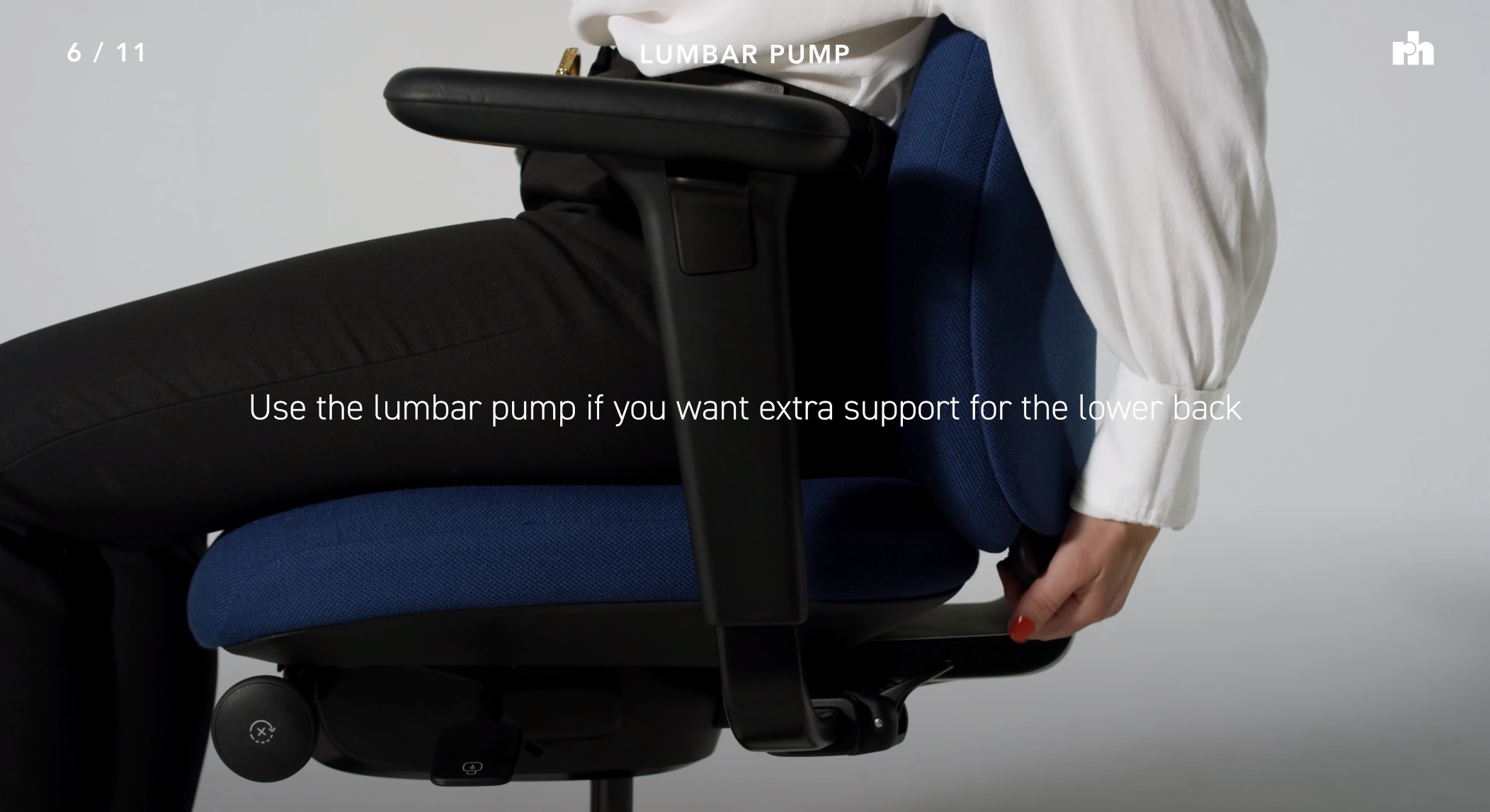
What is Lumbar support? Everything you need to know
An introduction to the whats and whys of lumbar support, exploring some of the options out there.
- Ergonomics
- HÅG
- RH

Office or desk seats come in all shapes and sizes, and there are several key features worth considering when choosing one for your office or desk space. If you plan on spending a fair amount of time using your chair (be it for work or extended gaming sessions) how much lumbar support the chair offers is definitely one of those features worth considering.
But what is it? And why is it important?
What is Lumbar Support?
Generally speaking, a ‘lumbar support’ is anything that gives you additional support to the lumbar region. If we are being technical, this is the five vertebrae of the lower spine between the sacrum and diaphragm, but to most of us, it’s simply the lower back.
For most people, there is a natural tendency to slouch or lean forward when seated for a long period of time, a posture that pushes out the lower back turning the natural inward curve into an outward curve. This can strain the various structures within the lower back, as explained by Flokk Ergonomist Sukhi Assee;
“Typically, when a person is sat in a slouched position, there is a lot of emphasis and strain on the lower vertebra (L4 and L5). Developing a non-neutral position is where the spine is resting in a C-shape position. Our most neutral spinal position resembles an S-shape, which in the sitting position, can only really be attained when the body is sat in a slightly reclined position. With this said, this is the position that ultimately requires lumbar support that essentially bridges the gap between the lower back and the backrest of the chair.”
When seated, good lumbar support should be right up against the small of your back, helping you to maintain the inward curve of your lower spine, giving you a healthy posture.

The HÅG SoFi mesh chair features an innovative adjustable lumbar support on a ratchet system, which you can easily slide into the correct position. Combined with the chairs seat depth adjustments, its height and depth can both be changed.

Some supports are operated by a dial. The HÅG Tribute, for example, has a touch button that pops out a simple knob that can be twisted to adjust the depth of lumbar support.
Types of Lumbar Support
Lumbar support comes in a variety of types, offering basic to excellent ergonomic qualities. Let's go through some of those options now.
Fixed Lumbar Support
A fixed lumbar support is one that is completely rigid. It is built into the chair and fixed in place, meaning it cannot change height or depth and is often found on lower-end chairs. Whilst this is more ergonomic than a chair with no dedicated lumbar support, its lack of flexibility can make it counterproductive. People come in all shapes and sizes, and your spine is as unique as your fingerprint, so a lumbar support that cannot be adjusted to fit you will be positioned incorrectly, either protruding too little or too much, providing incorrect support.
Adjustable Lumbar Support
Adjustable Lumbar support offers manual adjustability, allowing it to fit better for a much wider range of spine curvatures. These adjustments come in various ways including
Height: The support can move up and down the chair back to target more accurately.
Depth: This allows the user to control how far the support stands out. Sometimes this is done using a pump that inflates the support.
Firmness: often using a knob of dial, this adjusts how hard or soft the support is.
Whilst the height adjustment is often seen as the most important adjustment option, the best lumbar support combines at least two of the adjustments mentioned above.
External Lumbar Support
Chairs that contain no lumbar support can often be supplemented with external support, which most commonly comes in the form of a pillow. This is then held in position with a strap that can be manually adjusted to fit. This solution is a regular feature on dedicated gaming chairs, but can also be used to supplement basic office chairs.
One issue with this option is that the quality can vary dramatically, with cheap complimentary supports merely a token gesture that doesn’t provide ample support. They can also be problematic when it comes to staying in place.
Read more - Gaming Chairs Vs Office Chairs - Which is better?
Below - An inflatable lumbar support is operated by a pump, which can adjust both the depth and firmness of the support. The RH New Logic is an example of this - watch the video below to see how it works.

When is lumbar support not necessary?
When selecting a task chair one of the easiest aspects to notice is the absence of a lumbar support. This is normal because we have 4 natural curves in the vertebral column. The lumbar region is the area we notice, as this is the zone that reverts outwards when a person moves from standing to sitting incorrectly. In other words, it’s the area where we feel the aches and pains from sitting in a non-neutral posture.
So how can a chair have a support without a lumbar I hear you ask…simple answer, a chair with a pelvic support. Chairs with a pelvic support principle work by rotating your pelvis so that the S shape of your spine can be obtained naturally. This type of support automatically enables you to sit correctly, without having to hold your posture or forcing a bridge into the lumbar region of the back.
Summary
Lumbar support can be a hugely beneficial element of seating, especially if you have a tendency to work long hours. Whilst ultimately frequent movement and postural changes are the best form of practice to minimise strain on your body, especially your lower back, if you have difficulty in self-regulating postural changes and intend to spend long hours seated, you should definitely consider a chair with a lumbar support to help prevent long term health issues, and adjustable lumbar support will most likely provide the greatest benefits.
A final note is that lumbar support can only work if you are sitting correctly, as Sukhi comments; "When learning about the comfort quality of a task chair, we are always taught about the importance of lumbar support. Where this is still an important feature in most chairs, learning about the anatomy of the spine whilst sitting, can change the way we interact with a chair. A tip that seems easy in principle but forgotten in practice day-to-day, is simply remembering to sit back into the chair; I mean really scooting straight back...
What a lot of us do, is sit ON a chair and what we fail to do, is sit INTO a chair."
Find a chair with Lumbar Support Today
At Flokk, we have a great selection of chairs offering a range of adjustable lumbar supports, suitable for every user. Click the link below to explore our product portfolio today.
This might also interest you
HÅG SoFi – now available in tumbled aluminium
Extending the beauty of tumbled aluminium to HÅG SoFi — versatile,...
Improving ergonomics at work: practical guidance for companies
Ergonomist Rebecka Ullholm shares what most companies get wrong about...
HÅG Tion mesh – now available
Flokk is proud to introduce a new addition to the HÅG Tion family - HÅG...